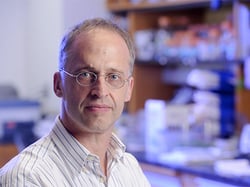 Tuberculosis is a terrible disease that is characterized by a bad, sometimes bloody cough, and which could lead to other serious health problems, or even death.
Tuberculosis is a terrible disease that is characterized by a bad, sometimes bloody cough, and which could lead to other serious health problems, or even death.
Over 1.5 million people currently die from TB each year, and as many as one third of the world’s population is currently infected, according to the Centers for Disease Control and Prevention.
In an effort to combat this worldwide health concern, Michael Niederweis, Ph.D., and colleagues from the University of Alabama at Birmingham have made an important discovery. The scientists recently uncovered an important toxin called Tuberculosis Necrotizing Toxin (TNT) that resides within the pathogenic bacterium Mycobacterium tuberculosis and aids in survival and proliferation.
Mycobacterium tuberculosis is the bacterium that causes TB, and usually attacks the lungs, but can also attack any part of the body such as the kidney, spine, and brain.
 According to a university press release, Niederweis’s toxin, called is the “founding member of a novel class of previously unrecognized toxins present in more than 600 bacterial and fungal species, as determined by protein sequence similarity”.
According to a university press release, Niederweis’s toxin, called is the “founding member of a novel class of previously unrecognized toxins present in more than 600 bacterial and fungal species, as determined by protein sequence similarity”.
Niederweis says that the TNT helps to kill the infected immune cells, called microphages, where the M. tuberculosis would normally live. This enables the M. tuberculosis to escape from the host cells and spread throughout the body.
“The battle between M. tuberculosis and the human immune system to control the fate of infected macrophages is critical in determining the outcome of the infection,” Niederweis wrote in the TNT paper. “The control of host cell death is of utmost importance for the survival, escape and dissemination of M. tuberculosis.”
Furthermore, the researchers say that the TNT gene is very similar to the DNA of over 600 other species of bacteria and fungi, and this discovery will likely have important benefits to research of these other organisms as well. This may not have been the first time TNT was “discovered”, either.
Niederweis explained that researchers uncovered a series of proteins with similar characteristics in the 1960’s, but they remained uncategorized and the researchers did not find the TNT.
Dr. Niederweis and his fellow scientists are an integral part of the research community at the University of Alabama at Birmingham, and are busy conducting studies at a variety of centers and institutes, including:
- Center for AIDS Research
- Center for Advanced Surgical Aesthetics
- Alzheimer’s Disease Center
- Biomatrix Engineering and Regenerative Medicine Center
- UAB Comprehensive Cancer Center
- Global Center for Craniofacial, Oral and Dental Disorders
- UAB Center for Emerging Drug Discovery
- UAB Heart and Vascular Center
- Evelyn F. McKnight Brain Institute
- Center for Nanoscale Materials and Biointegration
These facilities and dozens more are home to active UAB researchers who are currently in need of new lab supplies to further important projects in 2015-16.
 If you are interested in promoting lab products to life science researchers in the southern U.S., you have a great opportunity at the 16th Annual BioResearch Product Faire™ on November 12, 2015.
If you are interested in promoting lab products to life science researchers in the southern U.S., you have a great opportunity at the 16th Annual BioResearch Product Faire™ on November 12, 2015.
Last year, exhibitors at this popular show met with over 300 researchers, including professors, post-docs, lab managers and purchasing agents from 24 different research buildings and 32 departments at UAB.
For more information about attending, click below:



